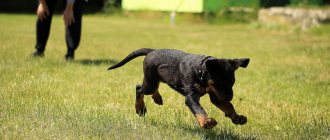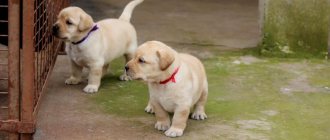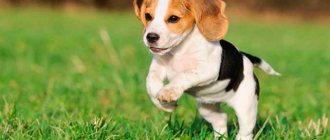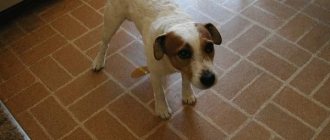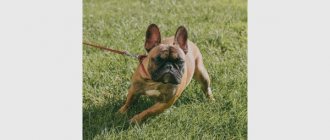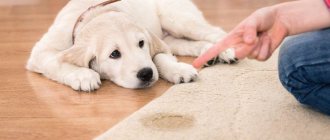Dog owners know firsthand what it means to train and train a pet. This requires a person to be patient, responsible and kind. It is a good attitude that determines the dog’s level of trust in you, as well as its ability to learn. Of course, it is worth considering that each animal has its own character. Its behavior is also determined by the breed to which the animal belongs. For example, service dogs have better developed endurance, although other species are not inferior to them in this quality. By this we want to say that inclinations need to be developed. It happens that you notice that as a result of regular training, your pet begins to show more discipline. Even if he is not a purebred breed.
The different ages of your pet are not a hindrance to training
You can toilet train your dog at any age. Most often you can find recommendations for training puppies. But people often get animals that are a year old or older. Such pets are found on the street, in special shelters, or given away by their former owners. The reasons may be different. It is important to understand that an adult dog requires a slightly different approach. Due to the fact that she has already lived through certain events, which, one way or another, were reflected in her character. In addition, some repeated events may have become habits. Therefore, correcting the behavior of an adult pet requires patience, understanding, and a caring attitude. A person’s already grown-up friend may not be accustomed to commands at all, or only know a few. But let's figure it out, is it possible to train an adult dog? The fact is that any training involves consolidating a skill. As with people, the younger the person, the easier it is to teach him. But even in middle age, a dog can be trained to ask to go outside to the toilet. In fact, sometimes people find it difficult with both a puppy and an adult animal. But imagine how a person would behave if his parents did not have the patience to explain to him how to eat or go to the toilet? Well, if the owner has finally started training, there is no need to retreat. But be careful with your persistence. An animal is also capable of understanding human feelings, being upset and being happy.
Taking care of your pet's health: the hidden dangers of walking
Walking is not only a lot of fun and positivity for the puppy, but also the risk of becoming infected with worms or external parasites. Therefore, preventive deworming should become the norm for your pet. A good solution for dogs with a short muzzle, as well as for capricious and biting pets who cannot easily give medicine by mouth, is the “Spot-on” form - drops on the withers. These drugs include Dironet® Spot-On for puppies. This is a medicine for external use in the form of drops. For treatment, it is used once, applied to the dry skin of the pet. For prevention, Dironet® Spot-On is used once a quarter or once every six months, depending on the dog’s lifestyle. This drug is suitable for puppies from 2 months of age.
How can you train an adult dog to go outside to go to the toilet?
We have talked about patience more than once. Just like with a small pet, an adult dog will require some work. To train your pet to ask to go outside, first take him out into the yard as soon as he wants to go to the toilet or starts doing it at home. It may be that even at night the dog needs to be taken outside. Don't scold, don't shout. This is only for the first time. Of course, you can say that this cannot be done. And immediately come up with a command that you can use when taking your dog to the toilet. For example, the question “Do you want to go for a walk?” And then try to take your pet out less often to relieve itself. A dog can tolerate 8 – 10 hours if it eats once a day. Sometimes even more. It is important, of course, to leave the diaper on and train the dog to use the litter box. Be calm about possible dog problems that can arise in animals as they age. We will tell you more about the teaching technique below.
What are the features of training an adult dog?
- Many dog breeders say that it is easier to train an older pet to ask to go outside. You may not have to cover everything with newspapers and diapers, set up an enclosure, or use other methods;
- Praise your pet if he did everything as needed. Give your dog a treat on the street and say “well done”;
- If your dog is stubborn, try to punish him gently. This does not mean that there should be no sternness in your tone. It is important not to get angry at the dog and not show it in your voice. To do this, it is worth understanding the reasons for the animal’s behavior;
- Some owners, for whatever reason, punish their pets by showing force. Don't do this as you may either intimidate the animal or provoke it into reacting. Sometimes even aggressively. In addition, it is important for a dog that the person nearby becomes a friend for it. Try to build relationships on trust;
- Increase the amount of time you spend walking. Play active games, run with the dog. But you need to walk until the dog does its job.
Dog training is a fun game!
Teach your furry friend to ask to go to the toilet and go outside without stress for both of you.
The course “Little Things to Do” is like an interesting quest, at the end of which the desired result awaits you.
Find out more
Reward for correct behavior
A few more tricks:
- After the puppy has done all his business, praise him well, give him a treat, and play with him.
- Don't go home right away, give the dog a walk. A walk should be associated with positive emotions.
- Praise your dog every time he goes to the toilet. This way, he will quickly understand that his behavior evokes positive emotions and praise from his owner, and he will try to bring you joy.
- Walk with him on different routes, let him get acquainted with the world around him. Read about where and how to walk your four-legged friend here - Dog Walking Rules.
How to teach a puppy to ask when needed?
A small animal is not always able to understand what is good and what is bad. In training, it is very important to be able to correctly convey to the dog what they want from it. If you decide to get a puppy, determine what schedule the animal will live on. To do this, take into account not only the time you work and perform household duties. It is clear that the animal also has its own biological processes and needs. He needs to eat, sleep, walk and go when needed. You can influence this schedule later. But first, it is important to understand that a puppy goes to the toilet several times more often than an adult dog. Buy diapers and be as prepared as possible for the fact that the puppy can pee anywhere he walks. Please note that if your baby is 6-8 weeks old, he will go to the toilet every hour. At night, your new pet can do this once every 2-4 hours. Up to 16 weeks, the dog learns to tolerate 2 hours during the day and 4 at night.
What not to do
Most mistakes are a punishment for a puppy who has not yet understood anything. It is not perceived by the baby, who, instead of obedience, begins to fear the owner. The mistake is pointed out immediately, and not after several hours - the pet will not be able to understand why he is being scolded.
Important! Attempts at physical violence due to missteps cause coprophagia in some animals. Out of fear, children begin to eat their own excrement in order to get rid of traces of the crime.
Indication of an oversight
To train your puppy to use the litter box:
- The tray should be of medium size so that the pet begins to understand that this is a place for the toilet. We do not recommend buying large trays. The dog can lie down to sleep there, but it is inconvenient to turn around in a smaller tray;
- Learn to wait, because the puppy is still small and it may be difficult for him to learn right away;
- Watch the animal. Toilet times vary, but it is often important to focus on training after eating, sleeping, or playing;
- If you do not immediately change the rag or diaper in the tray, the puppy will quickly understand where he needs to go to the toilet;
- Place the tray where people are most often. For these purposes, a hall is suitable, in which you can install an enclosure with a tray and a place to sleep;
- At night and if you leave, be sure to leave your pet there. You can let him out during the day so he can be physically active. As soon as you notice that your pet begins to squirm or relieve himself, take him to the designated place. To do this, lightly tap and push towards the tray;
- If the puppy already enters the enclosure with a tray on his own, praise him;
- When you can't train your dog to use the toilet, use diapers to create a path to the litter box. You can also use a special spray.
Have you already tried it and it doesn’t help?
Enroll in an online school and solve your problem right now!
more details
You can train a puppy to ask to go outside from 2-2.5 months. It is at this point that the dog, as a rule, has already received all preventive vaccinations. Not being afraid to take your puppy outside will make it easier for you to start training. It is important to take a leash with you and never unfasten it if you are walking for the first time.
After the puppy has learned the routine, you can safely start taking him out for walks. It is advisable to do this after eating or sleeping. Also keep in mind that the older the dog, the less often he needs to go to the toilet.
Suitable age to start walking
Approaches to their names should also be rewarded.
Veterinarians strongly recommend not walking puppies until all vaccinations have been completed and quarantine is over. Only after this is it possible to start walking. Since this concerns the health of the pet, it is worth listening to the advice.
On your walk you should take with you:
- water;
- treats;
- diaper.
Regarding water, everything is clear. Treats may be needed to calm down and begin to learn the simplest commands - “come to me” and “near”. They begin to study them from the age of 3 months, but it is advisable to accustom them and start voicing them earlier. It is worth rewarding with a treat simply for the fact that the baby came to the name or even just paid attention to the owner.
A diaper can help train your dog to relieve itself outside. As soon as the baby begins to demonstrate characteristic behavior, it should be laid directly on the ground. If the baby has already gone to the diaper at home, then he will go to it outside. Gradually, he himself will understand that he should relieve himself outside the home.
Features of winter walking
While the pet is still small, long walks in winter are contraindicated for him. It is also worth considering the breed. If even at a small age the dog is large in size and has thick fur, you can not worry and walk even at low temperatures, but still not for long. Also, you should not keep your baby in an enclosure, even if he will live there in adulthood.
Representatives of small and smooth-haired breeds should only be taken out for short periods of time at low temperatures. This applies to small varieties of terriers, chihuahuas and the like. Winter is not the time for them to play outside, but summer is the most suitable time.
Important! Small puppies must be dressed in sub-zero temperatures outside. While their body is not yet strong, they are very susceptible to colds.
Babies need to be dressed for winter walks
How to train a dog to use a leash?
In order to go outside with your dog for the first time, it is important to know how to put on a collar correctly. If your pet is already 1-2 months old, you can train him quickly enough. Of course, any animal will be uncomfortable at first. To help your puppy adapt to the collar faster, put it on a few minutes before eating. Having fun while eating, the dog will experience less negative emotions. Choose a comfortable and soft accessory that does not restrict your pet’s movements.
When going outside, wear a collar. Let the dog run around the apartment a little and get used to it. Only then can you put on a leash. The dog may be confused at first. Walk around the house. If the puppy tries to chew on the leash, distract him with a treat.
